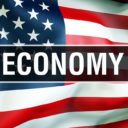
In a statement, the Federal Open Markets Committee said the inclusion of “patient” was no longer warranted.
Despite downgrading its economic forecast, low inflation and a stronger U.S. dollar, the Federal Reserve indicated Wednesday that it will raise interest rates in a meeting later this year.
In its policy statement, the Federal Open Market Committee (FOMC) said “that an increase in the target range for the federal funds rate remains unlikely at the April FOMC meeting,” removing the statement they would remain “patient in beginning to normalize the stance of monetary policy.”
Federal Reserve Chair Janet Yellen has said the committee’s inclusion of “patient” indicates that the committee would hold off raising rates for at least two meetings, thus the updated language suggests the FOMC could start raising rates as soon as its policy meeting in mid June.
“This change in the forward guidance does not indicate that the Committee has decided on the timing of the initial increase in the target range,” the FOMC statement said, adding that “The Committee anticipates that it will be appropriate to raise the target range for the federal funds rate when it has seen further improvement in the labor market and is reasonably confident that inflation will move back to its 2 percent objective over the medium term.”
Committee members also signaled that once the Federal Reserve raised rates from the historic near-zero target, it would set a more gradual pace for subsequent increases. The so-called “dot plot” showed a slower rate of increases than it did following the FOMC’s December meeting.
However, the Fed said that U.S. “economic growth has moderated somewhat,” though they still expects the economy will expand at a 2.3 percent to 2.7 percent pace in 2015, down from previous estimates of 2.6 percent and 3 percent.
The committee also projected low levels of inflation to continue, forecasting a price-growth range of 0.6% to 0.8% this year. Its December forecast called for inflation to reach up to 1.9% in 2015. The FOMC said slowing inflation — projected at a range from .6 to .8 percent — was largely reflected by “declines in energy prices,” which it described as “transitory.”
The central bank also projected the unemployment rate to fall to as low as 5 percent this year, down from 5.2 percent. But they made no mention of the increasing weekly jobless claims, the abysmal employment-to-population ratio or weak labor force participation, both of which contribute to the falling unemployment number.
The FOMC policy action was unanimous among voting members.







